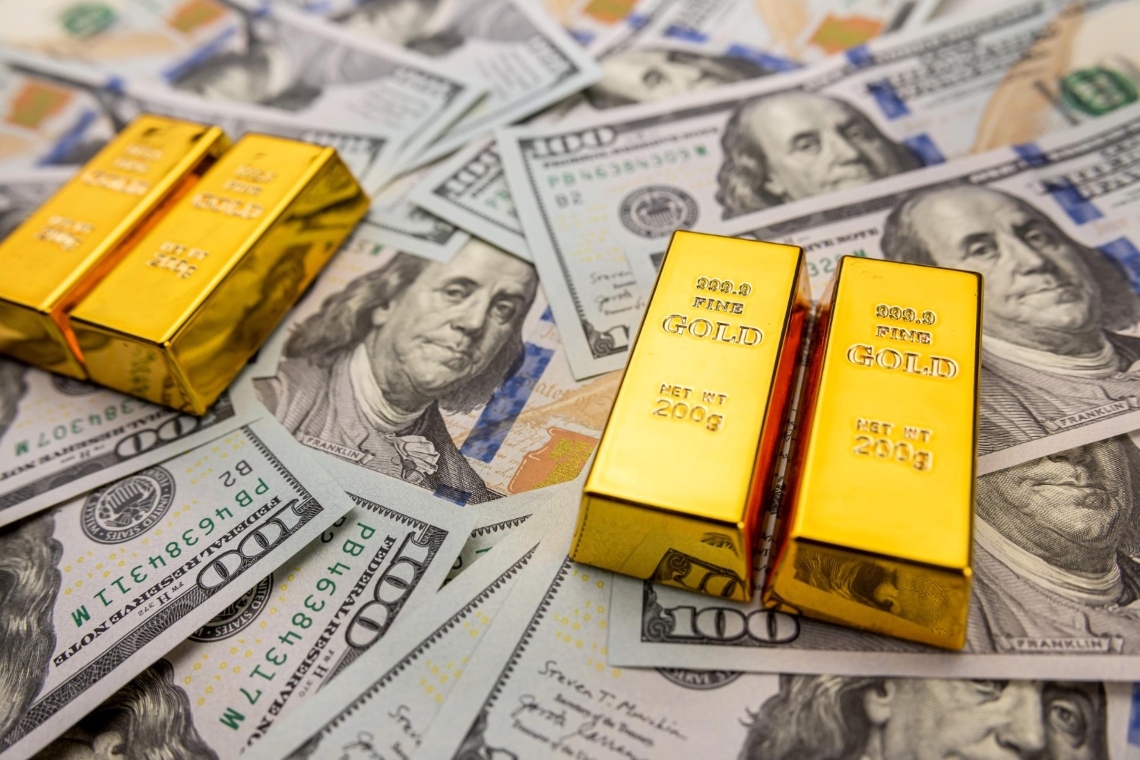For three months now, the price of gold has been rising.
Indeed, in early November 2022 it hit its annual low at $1,640 an ounce, which is a value it had already touched in September.
However, the October rebound had brought it back around $1,720, while the one that began on 4 November took it up to almost $2,000 in early February.
Summary
The forecast for gold’s price
Truth be told, after reaching for a very brief moment as high as $1,960 precisely on 2 February, it began a descent that brought it back below $1,900, or between $1,860 and $1,880.
This descent, however, does not seem to frighten analysts, according to many of whom the value of gold has the potential to rise well above $2,000 at this time in history.
In particular, there are even those who believe it could go as high as $3,000. This is Leigh Goehring, managing partner of Goehring & Rozencwajg, who said in a recent interview with Kitco News that he would not be surprised to see a price of $3,000 this year, because there seems to be no resistance to the possible rise in the value of gold.
According to Goehring, gold will play an important role in the commodities sector this year, with prices rising above $2,050.
This is a threshold that has already been breached very briefly twice in recent years, once in August 2020 and once in March 2022. But these were only very brief isolated instances, while according to Goehring gold will reach record levels this year, surpassing previous all-time highs
Indeed, it seems that people want to be optimistic about gold, with average oil indexes having risen 200% since 2020, while the price of gold is still at July levels of the same year.
Goehring adds that the Fed is ending its aggressive round of monetary policy tightening, and the market is not pricing inflation correctly. When the Fed stops raising rates there will be other big problems with inflation, which will generate a massive surge in the value of gold.
The inflationary spiral
Leigh Goehring is not the only one who believes that inflation is unlikely to return to 2% to stay there for a long time.
Indeed, there are several analysts who expect inflation to rise again sooner or later, especially when the Fed’s monetary policies inevitably become less aggressive.
These are only assumptions, as the actual trend for now describes a significant and steady decrease in inflation, but based on the fact that the Fed will not be able to continue its monetary policy so tightly for long.
Sooner or later it will inevitably have to soften it a bit, and at that point the risks of a pickup in inflation will be there.
As the global economic landscape evolves, staying informed about market trends is crucial. Keep a close eye on the Live Gold Price to gauge whether the current surge in gold prices could continue to rise amid shifting economic dynamics.
The price of gold and inflation
The value of gold in financial markets seems to be inversely correlated with the value of the dollar, or the Dollar Index (DXY).
After the onset of the pandemic and the collapse of the financial markets in March 2020, the Fed began flooding the markets with huge amounts of dollars created out of thin air.
This brought the price of gold within four months from about $1,700 to $2,075, just as the Dollar Index dropped from 99.7 to 92.3.
Beginning in September 2021 though, the Dollar Index began to rise again, until it exceeded 113 points in October 2022. At that time, the price of gold, after first returning to $1,700 and then to $2,070, began to decline to $1,614 in September 2022.
However, as soon as the Dollar Index started to fall again, down to 102 points. The end of January 2023, the price of gold rose again to $1,960 in early February.
These dynamics do not follow those of inflation, but rather at first follow those of the Fed’s monetary policy. At first very expansionary, then restrictive, and then very restrictive.
It is no coincidence that the peak of inflation in the US was there in June 2022. The peak of the dollar was there only three months later. Inflation began to rise substantially in April 2021, but the Fed did not begin to tighten its monetary policy until March 2022. When the last decline in the value of gold began.
Paradoxically, when inflation rose, the value of gold did not move significantly, while it began to fall when inflation also began to fall. So rather than being correlated with inflation, the value of gold reacts to changes in the Fed’s monetary policy.
Historical rises
The most significant changes in the value of gold over time appreciate well only over the long term. In recent decades, the price of gold has had two major upward phases.
The first, between 2005 and 2011, took the price from $450 an ounce to $1,900, only to see it fall to $1,000 in 2016.
The second between 2019 and 2020 saw it rise from $1,000 to $2,000. Given that this second climb was much shorter than the first, it may not actually have ended yet. In other words, it may have merely stopped temporarily because of the Fed’s unusually tight monetary policy.
At this point, should the Fed really ease it in the coming months, it is possible that the rise in the gold price will continue, perhaps even well above $2,000.




